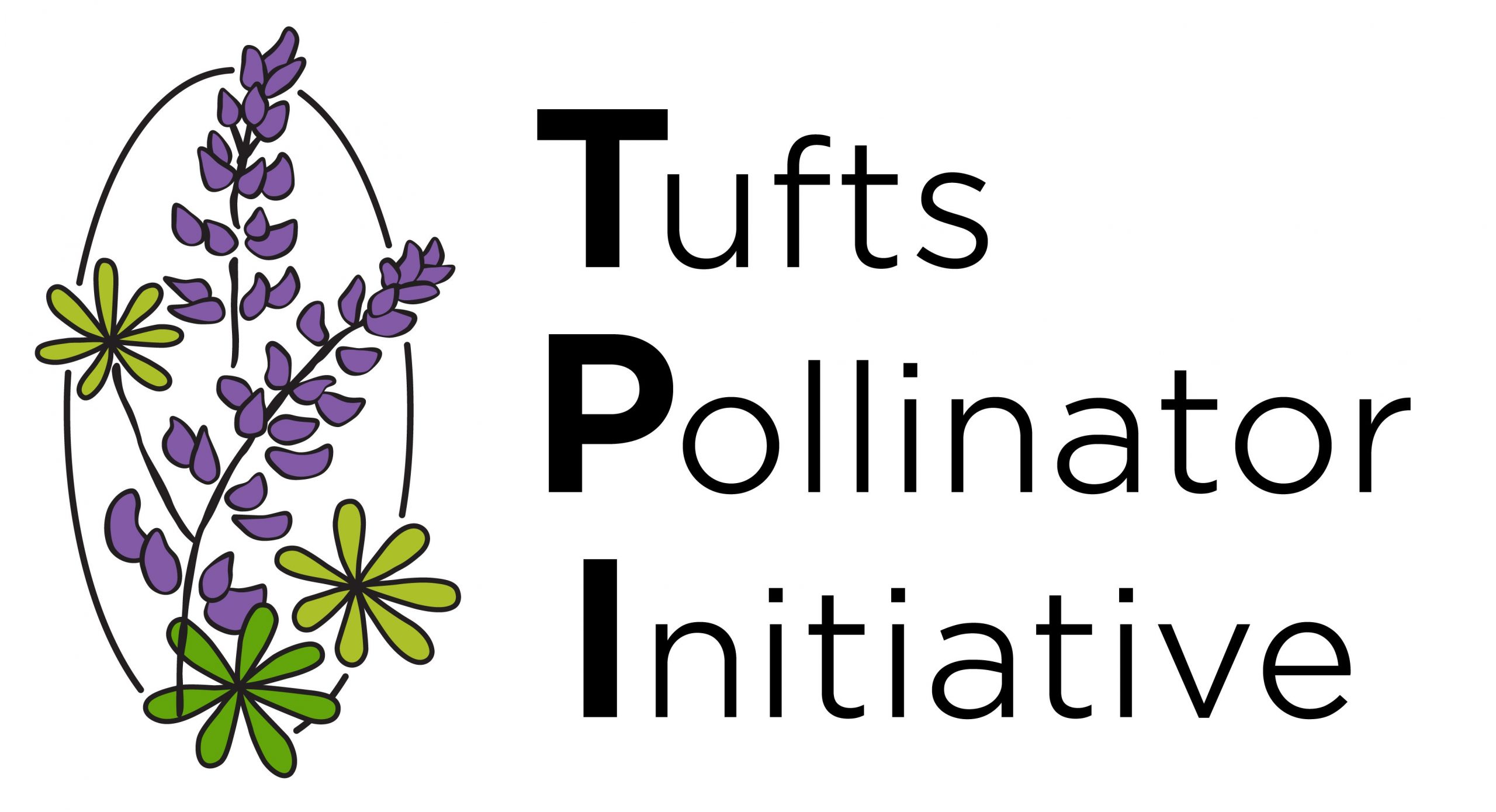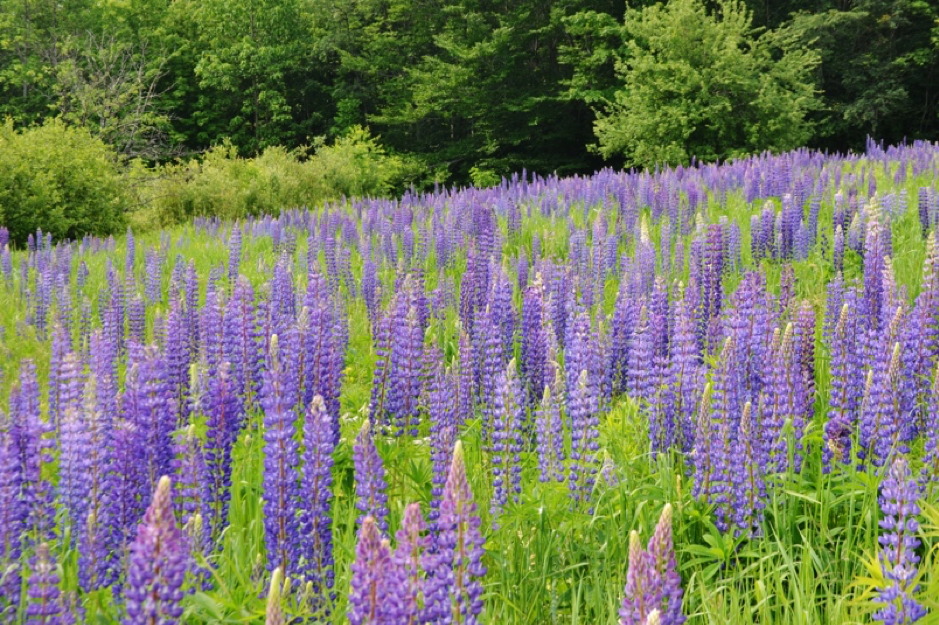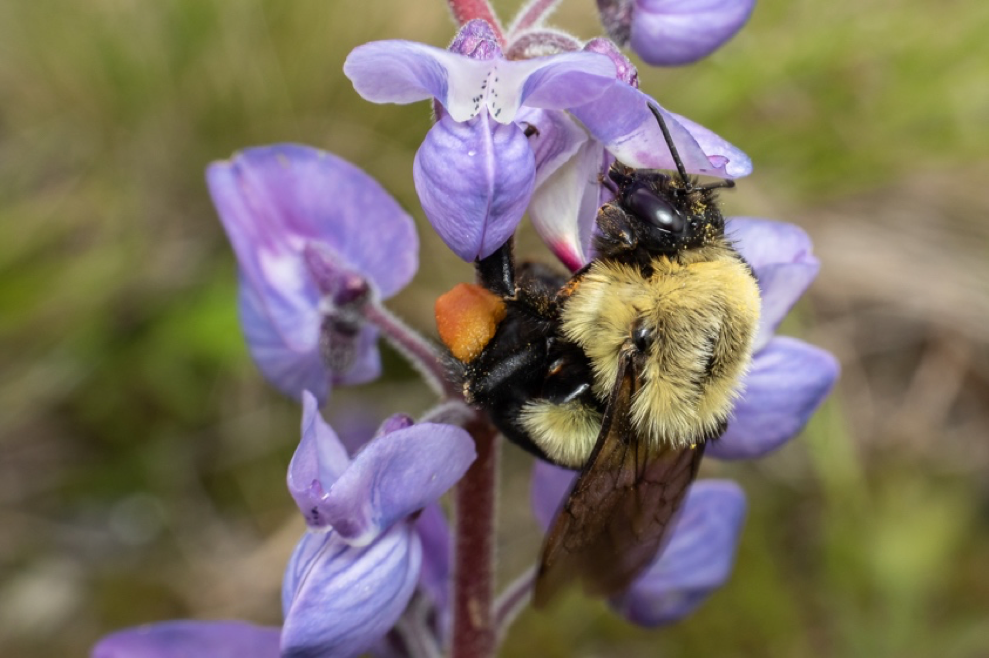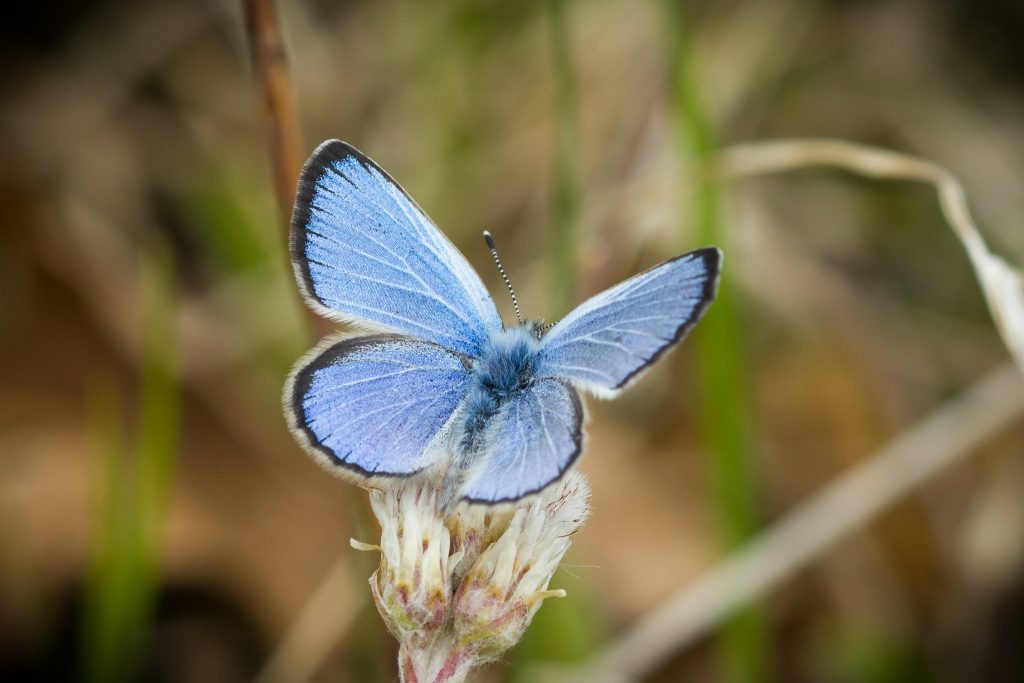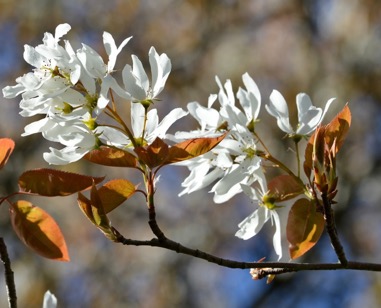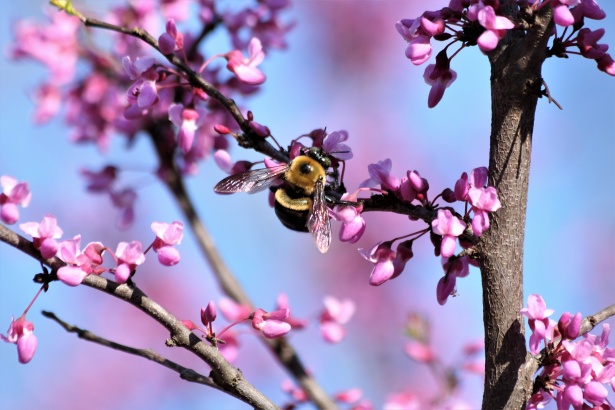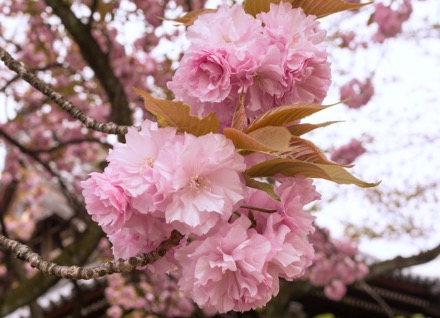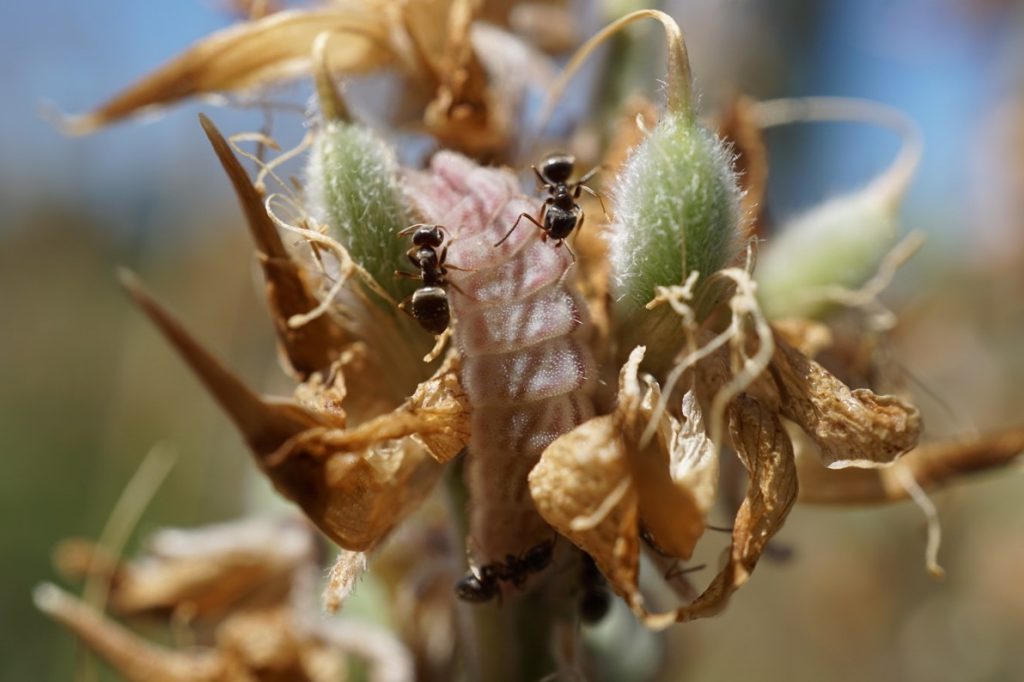
What are these ants doing, clustering around a caterpillar? If you guessed eating, you’d be right, but probably not in the way you imagined.
These ants are engaged in what’s called “tending,” and far from being harmed by the interaction, the soft and vulnerable caterpillar is likely a beneficiary. In fact, the caterpillar has a suite of complex adaptations that seem aimed at keeping ants nearby. Most striking among these is the dorsal nectary organ, a gland that secretes a nutritious liquid high in sugar. Foraging worker ants eagerly consume the food and bring it back to their colonies. The cost to the caterpillar is only the cost of producing these little nutrition packets.
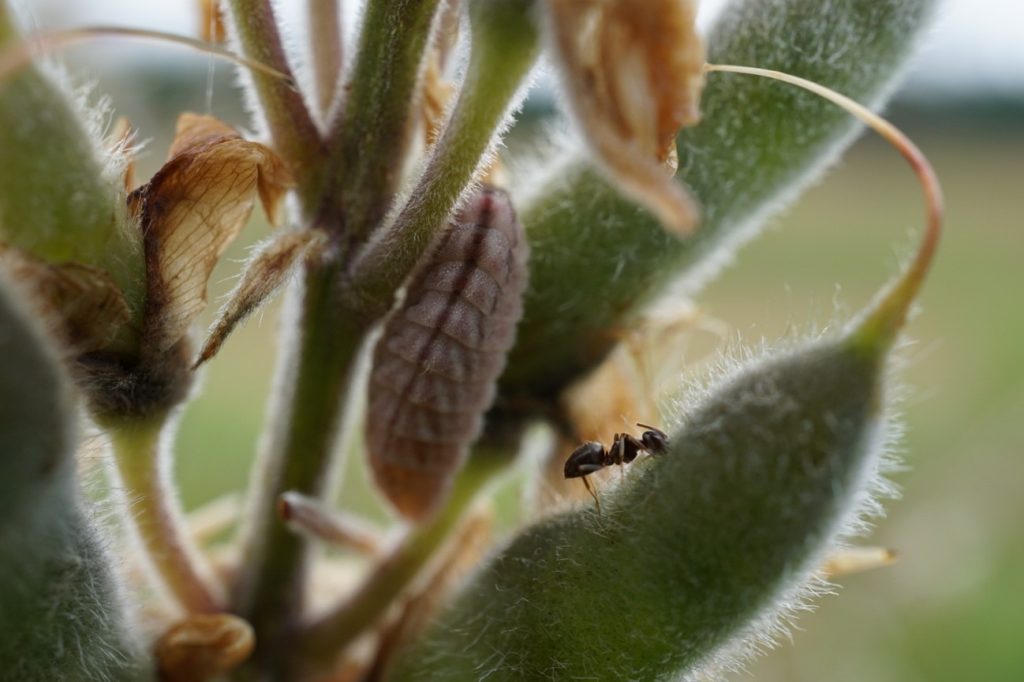
But why would a caterpillar want a murderous cadre of ants clustered around it? The answer is protection. For one thing, when you manage to get the bullies on your side, they won’t bully you anymore: that is, the pacified ants are no longer a threat to the caterpillar. And in general, being a caterpillar is very dangerous. They have soft bodies, often feed in the open, and are not known for their quick movement, making them easy prey. In addition to being eaten directly, there are a huge diversity of parasitoids in the insect world, who lay eggs inside caterpillars’ bodies and eat their way out. This kills the caterpillar. A standing guard of ants, who generally protect their food sources and each other, lowers the caterpillar’s risk of being parasitized. Thus, because this interaction is often mutually beneficial, we call it a mutualism, meaning that both the ants and the caterpillars do better because of it: ants get food and caterpillars get protection.
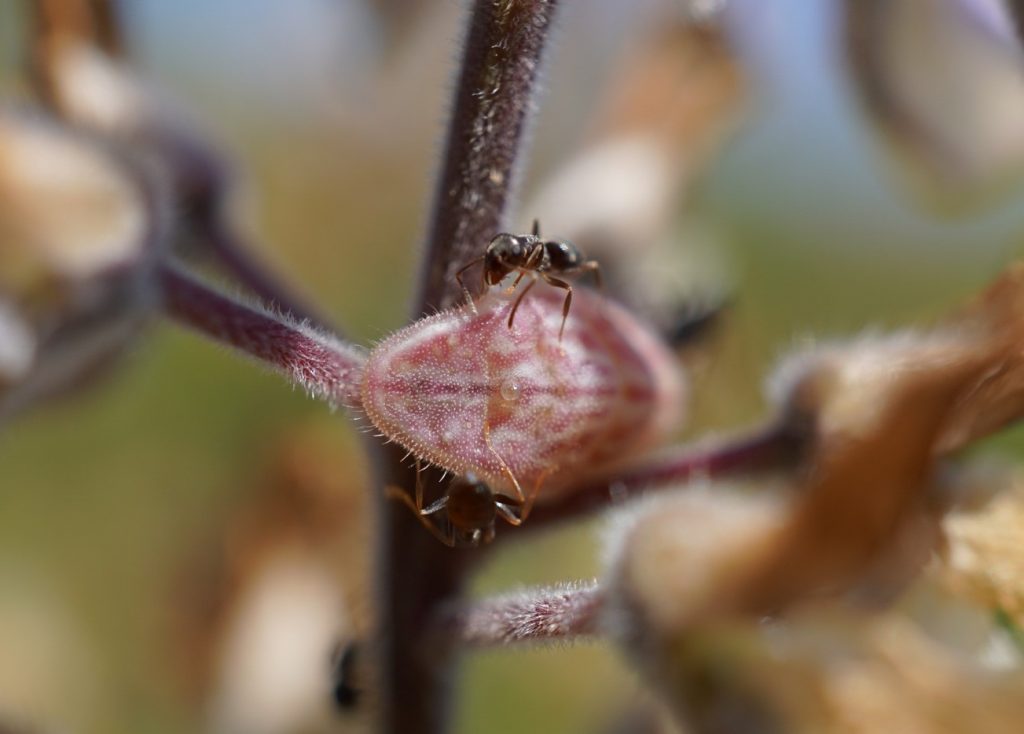
In order to keep their attendants friendly, the caterpillar can also release a potent cocktail of chemicals that mimic ant pheromones, encouraging the ants to stick around, and hopefully keeping them from trying a bite of caterpillar. This cocktail is so effective that sometimes the ants can’t distinguish the scent of the caterpillar from their own kind. If the ants are absent and a predator approaches, some caterpillars also make use of specialized organs that produce noises or fragrances, attracting ants from farther away.
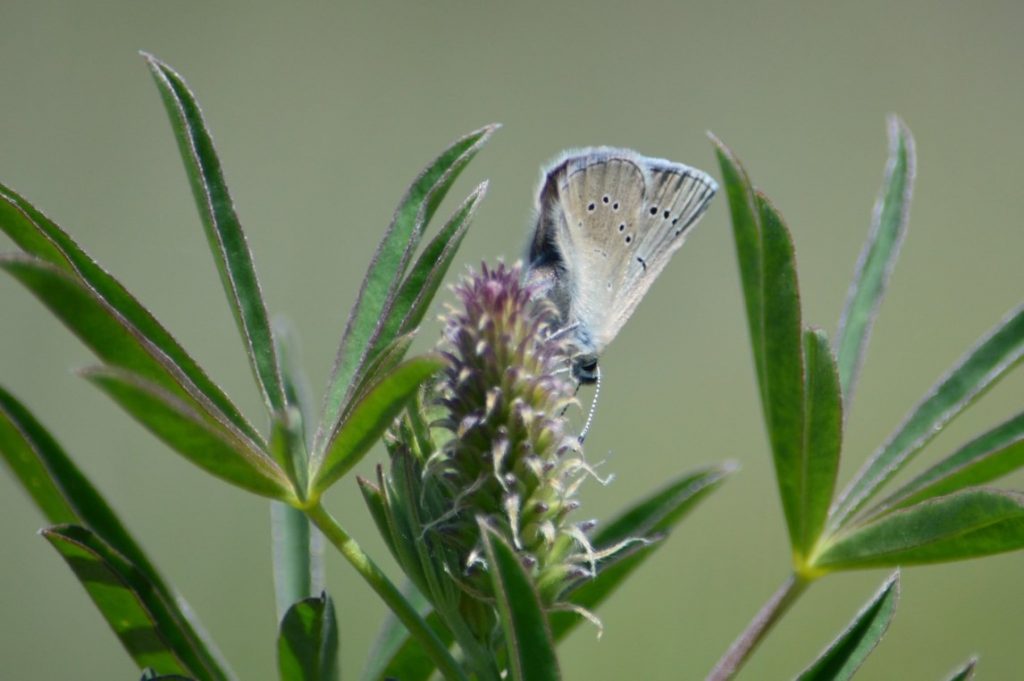
The butterfly species in the pictures above is the one I worked with this summer, the silvery blue (Glaucopsyche lygdamus). It’s common across the U.S., but this interaction is a global phenomenon, occurring in hundreds of butterfly species that can be found on every continent except Antarctica. And with a diversity of species comes a diversity of interactions: many different ant-caterpillar pairings have emerged, and unique quirks abound. Perhaps the most captivating variations on the theme are the parasitic blue butterflies. These dastardly caterpillars have taken the usual mutually beneficial interaction and tilted things decidedly in their own favor by truly pretending to be baby ants. After spending some time feeding on a host plant like most caterpillars do, these species use their unusually effective chemical mimicry to induce ants to take them inside the actual nest, where the caterpillars are either fed alongside the real ant young, or more sinisterly, the caterpillar devours the ant young, growing fat by pillaging their hosts until they’re ready to emerge as adults.
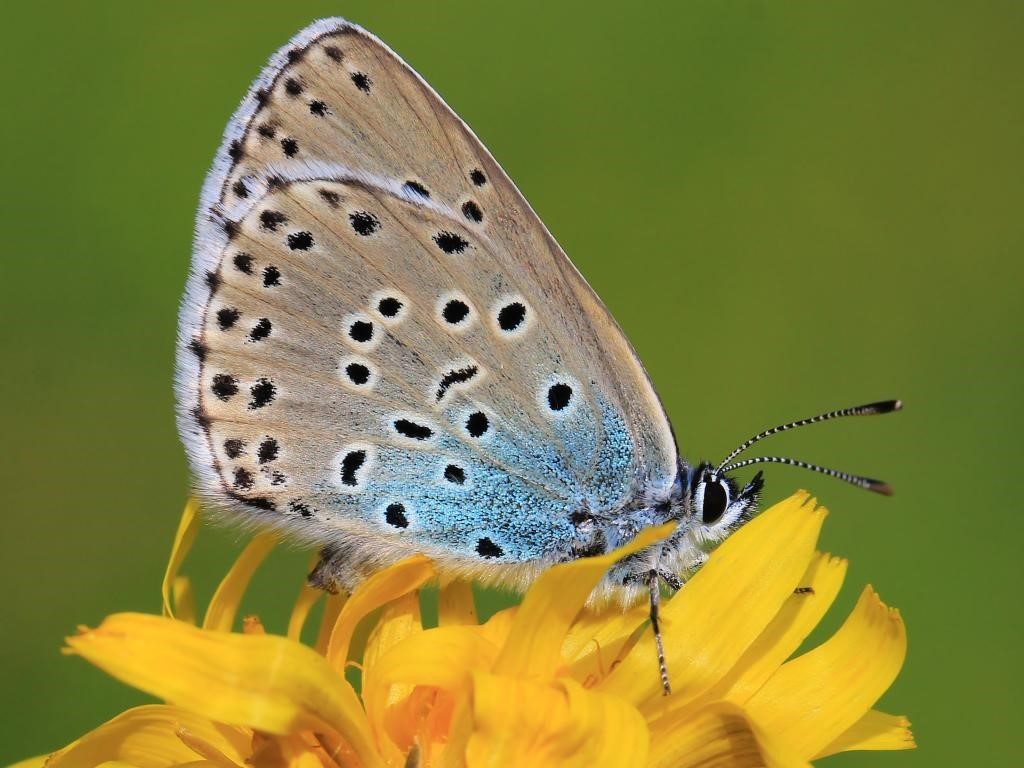
The ant-tending of these butterflies is not just an interesting quirk of natural history, but for some species may be the key to their continued existence. The classic example of this possibility is the large blue butterfly (Phengaris arion) of Britain, which is a parasite of Myrmica ants. This butterfly was on the decline for decades in the British Isles and was an early beneficiary of an intensive conservation campaign. Unfortunately, this campaign failed, and by the 1970s, the species teetered on the edge of extinction in spite of years of efforts. The conservationists were perplexed. They had carefully cultivated healthy patches of the host plant, Thymus, and there looked to be plenty of ants in the area, so why were the butterflies still declining?
It took a careful reexamination of the already well-known dependence on Myrmica ants to understand what had occurred. The large blue was an unrecognized specialist, a butterfly who relied not just on Myrmica ants to survive, but on a particular species of Myrmica ant. This species was so crucial that even close relatives were totally unsuitable and could not successfully “raise” caterpillars to adulthood. While there were indeed plenty of Thymus plants and plenty of Myrmica ants, the ants were of the wrong species! The large blue tragically went extinct in Britain before this new knowledge could be put in practice, but it has since been successfully reintroduced.
So, the next time you see a blue butterfly, remember that it might well have relied on an unruly bunch of ant nannies to survive into its winged form. Remember also that these butterflies provide still another example of the myriad ways in which our pollinators are dependent on an entire healthy ecosystem and its component parts, not just on their host plants.
Further Reading:
Pierce, N. E., M. F. Braby, A. Heath, D. J. Lohman, J. Mathew, D. B. Rand, and M. A. Travassos. 2002. The ecology and evolution of ant association in the Lycaenidae. Annual Review of Entomology 47:733–771.
Thomas, J. A., D. J. Simcox, and R. T. Clarke. 2009. Successful Conservation of a Threatened Maculinea Butterfly. Science 325:80–83.
